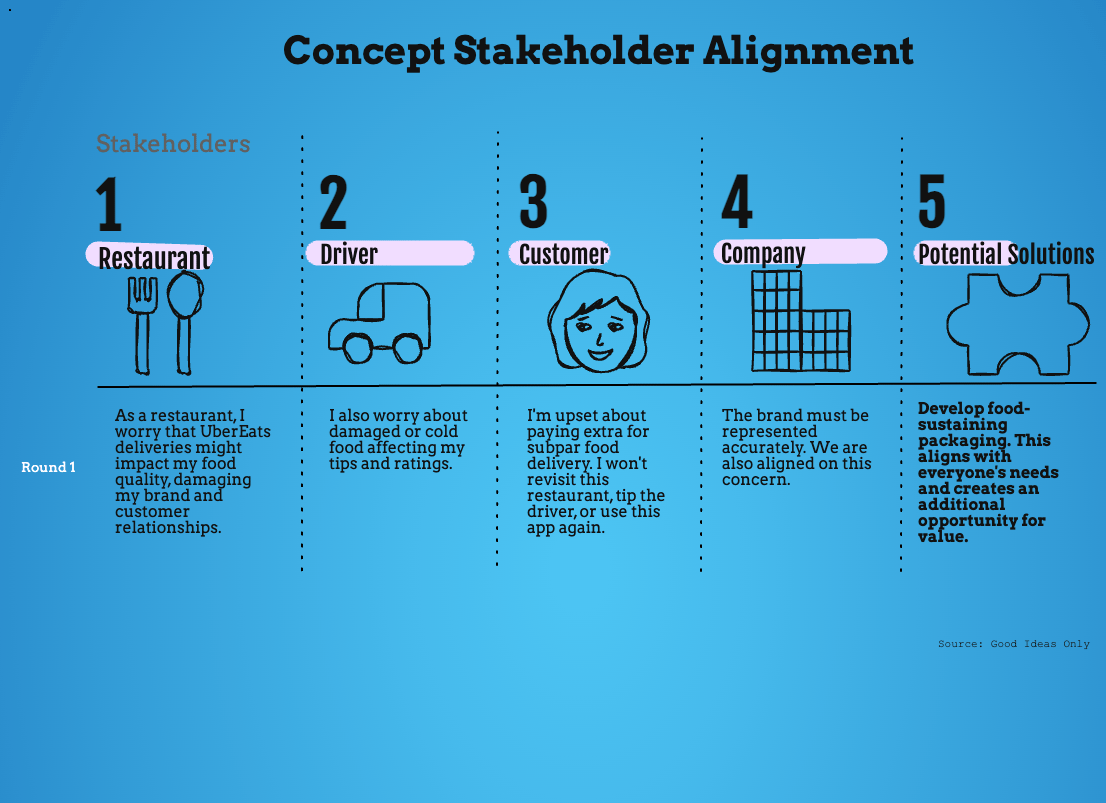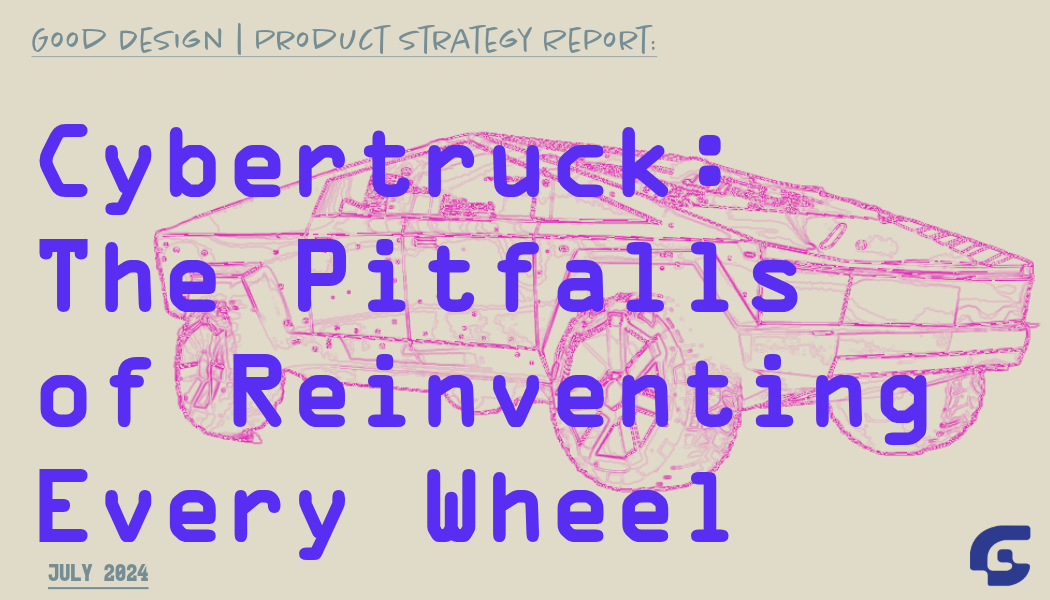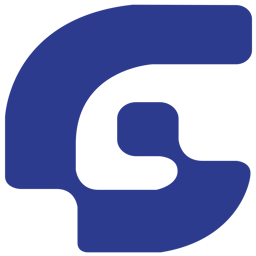Aligning Stakeholders for Product-Market Fit: A Comprehensive Guide to GIO's Product Stakeholder Alignment Framework
Good Ideas Only • 2024-04-03
Achieving product-market fit is crucial for the success of any product or service. GIO's Concept Stakeholder Alignment framework helps companies align the needs and concerns of different stakeholders, leading to mutually beneficial solutions and opportunities for growth.
In today's competitive business landscape, achieving product-market fit (PMF) is crucial for the success of any product or service. However, finding alignment among the various stakeholders involved in a business model can take time and effort. That's where GIO's Product Stakeholder Alignment framework comes in. This powerful tool helps companies identify and align each stakeholder's needs and concerns, leading to mutually beneficial solutions and opportunities for growth.
What is Product Stakeholder Alignment?
Product Stakeholder Alignment is designed to find alignment among different stakeholders in a business model. Take UberEats, for example, which has four key stakeholders: the driver, the customer, the restaurant, and the company itself. The framework seeks to align each stakeholder's interests and find solutions that benefit all parties involved.
Why is Stakeholder Alignment Important?
Alignment is necessary for achieving product-market fit. Conflicts, miscommunications, and suboptimal product decisions can result when stakeholders are not aligned. This, in turn, can result in poor user experience, low adoption rates, and poor retention. Companies can proactively address potential issues using the stakeholder alignment framework and create value propositions that resonate with all stakeholders.
How to Conduct a Stakeholder Alignment Exercise:
To begin, create a simple chart with each stakeholder listed along the columns and their needs listed in the rows. The exercise is conducted in "rounds," where each stakeholder can express their "notes," which can be concerns or hopes related to the business model.
For instance, in the UberEats example, a round might look like this:
Round 1—The Restaurant
Restaurant: As a restaurant, I am concerned that the food UberEats delivers to my customers will not be as I made it, ruining my brand reputation and relationship with the customer.
Driver: I, too, share this concern: damaged or cold food won't help me make tips or get good ratings.
Customer: I, too, am concerned that I pay an extra fee to get food delivered that does not meet my expectations. I will not be willing to patronize this restaurant again, tip this driver, or use this app again.
Company: The brand must be represented accurately. We are also aligned on this concern.
Solution: Develop food-sustaining packaging. This aligns with everyone's needs and creates an additional opportunity for value.
The Value of Stakeholder Alignment (ERIM):
The Product Stakeholder Alignment framework offers several value propositions, which can be summarized using the ERIM (Eliminate, Reduce, Increase, Make possible) model:
Eliminate: The framework helps eliminate communication gaps, misunderstandings, and potential stakeholder conflicts.
Reduce: It reduces the time and effort required to reach a consensus and make decisions by proactively addressing concerns and finding common ground.
Increase: Stakeholder alignment increases the likelihood of finding mutually beneficial solutions that satisfy the needs of all parties involved.
Make possible: By aligning stakeholders, the framework makes it possible to uncover new opportunities for growth and innovation that may not have been apparent otherwise.
Implementing Stakeholder Alignment in Your Organization:
To successfully implement the Product Stakeholder Alignment framework in your organization, consider the following:
Timing: Determine the best stage of the product development process to conduct the exercise, such as during ideation, prototyping, or post-launch iterations.
Participants: Identify the key stakeholders who should be involved in the exercise and ensure equal representation and participation.
Facilitation: Assign a neutral facilitator to guide the discussion, ensure productive conversations, and keep the exercise on track.
Integration: The framework should be integrated with existing product development methodologies and tools, such as agile, lean, or design thinking processes.
Measurement: Establish metrics and indicators to assess the impact of stakeholder alignment on product outcomes and gather feedback for continuous improvement.
Real-World Examples:
Many successful companies have used stakeholder alignment to drive product success. For example, Airbnb's "Host Guarantee" program originated from a stakeholder alignment exercise identifying hosts' concerns about property damage. By addressing this concern and offering a $1 million guarantee, Airbnb was able to attract more hosts and grow its business.
Similarly, Spotify's "Family Plan" subscription was developed after a stakeholder alignment exercise revealed that families shared individual accounts, leading to a suboptimal user experience. By introducing a family-friendly subscription option, Spotify was able to meet its users' needs better and increase retention.
GIO's Product Stakeholder Alignment framework is robust for achieving product-market fit and driving business success. By aligning the needs and concerns of all stakeholders, companies can create value propositions that resonate with everyone involved, leading to better user experiences, higher adoption rates, and improved retention. By following the steps outlined in this guide and learning from real-world examples, product and design leaders can effectively implement stakeholder alignment in their organizations and unlock new opportunities for growth and innovation.





